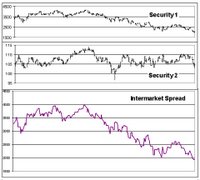It is rarely a good idea to purchase the stock in a company which has recently filed for bankruptcy. As the stock holders have the lowest claim when a company files for bankruptcy, usually they end up getting very little or almost nothing at the end of the bankruptcy proceedings.
One way to make money off bankruptcy is to invest in the debt securities of such a company which may be selling at 20-30 % of the face value. However this is a very specialized field which is best left to experts who specialize in this field.
The best way to profit from bankruptcy is to invest in the new common stock of the company which is issued after the completion of the bankruptcy proceedings. Since the stock is issued to the current creditors like banks or suppliers, they are rarely interested in holding the stock due to which there is a selling pressure after the new common stock is issued. This creates a situation similar to spinoffs. However it is critical that the investor analyses the company in detail before buying the common stock as random purchase of such stocks that have recently emerged from bankruptcy will rarely result in superior long term performance. There are several reasons for it. One reason is that most companies that have gone through bankruptcy were in diffcult or unattractive businesses to begin with and shedding debt obligations does not change the basic economics of the business ( think airlines). However if the investor does reasonable due diligence, then he would be able to find a few attractive opportunities which the underlying economics of the business is healthy.
The next area of opportunity is corporate re-structuring. If there is a major re-structuring of a company where a major division is spun off or if a losing business is sold off then such an event can create a profitable opportunity. After spinning off the weaker or money losing division, the resulting company is more profitable and focussed and may be given a higher multiple by the market. In addition the re-structuring can create a more focussed and efficient enterprise which may perform better in the future. Investing in the company after the re-structuring is over can be a profitable option.


